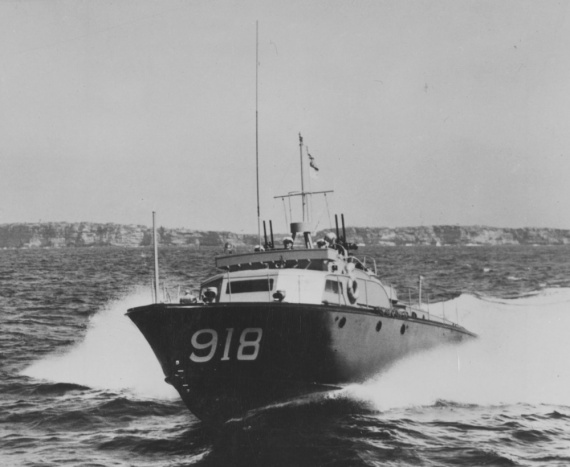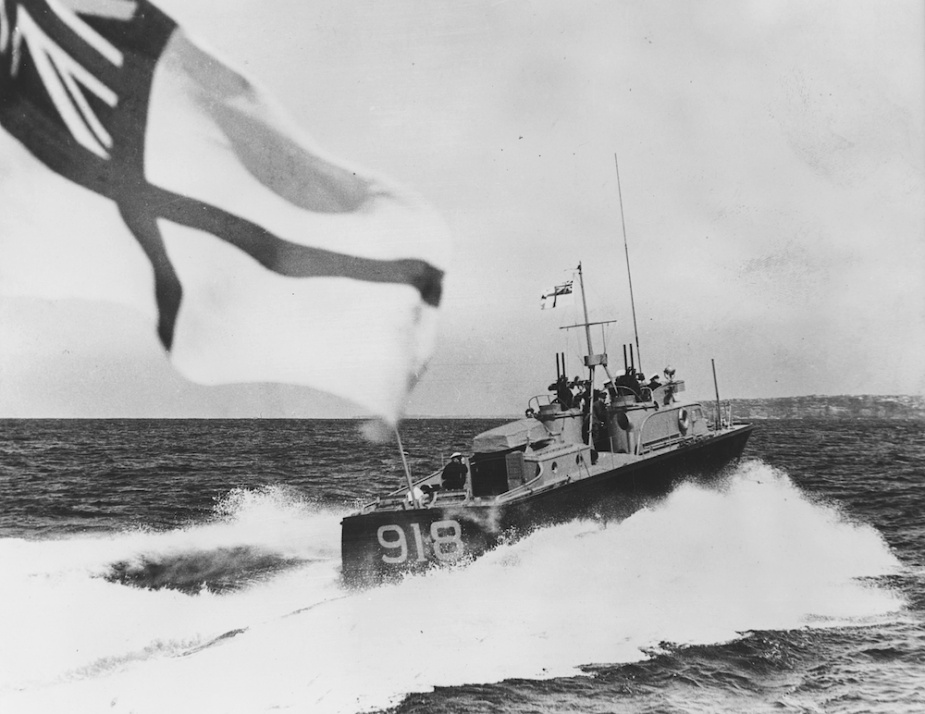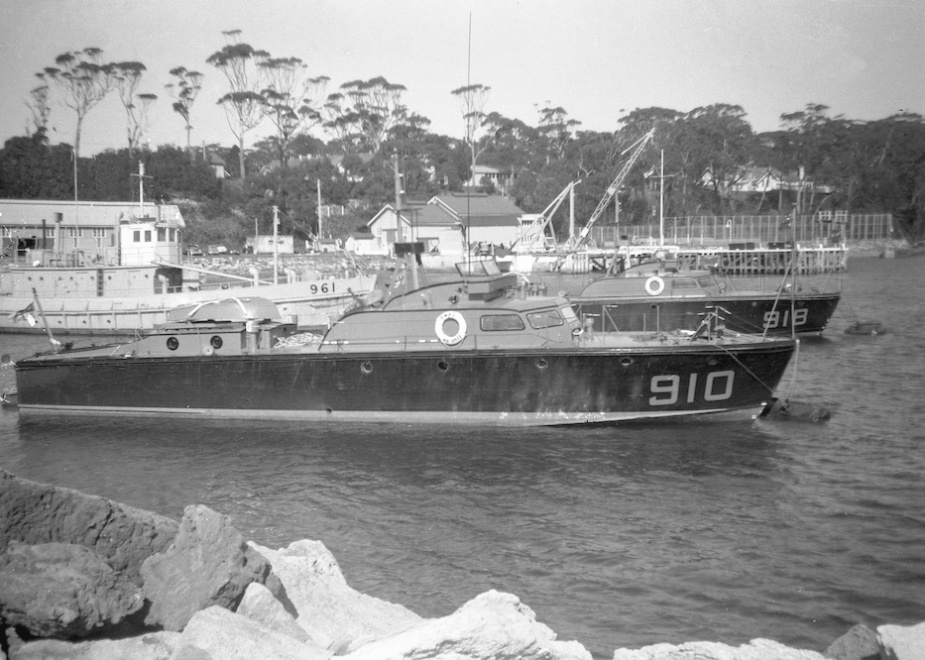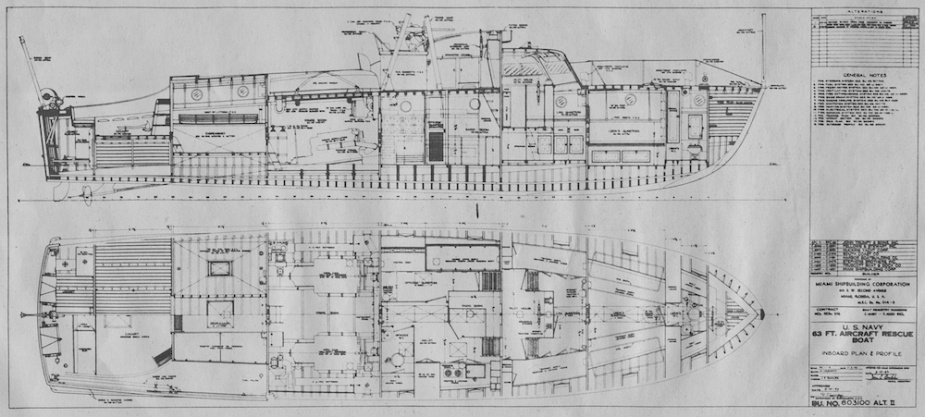HMAS Air Chief
| Class |
Air/Sea Search and Rescue Vessel |
|---|---|
| Type |
Air-Sea Rescue Launch |
| Pennant |
ASR918, Y252 |
| Builder |
Fellows & Stewart Inc, USA |
| Commissioned |
12 August 1944 |
| Decommissioned |
15 July 1966 |
| Fate |
Sold 15 July 1966 |
| Dimensions & Displacement | |
| Displacement | 24 tons |
| Length | 63 feet (19.2 metres) |
| Beam | 15 feet (4.57 metres) |
| Draught | 3 feet 4 inches (1.01 metres) |
| Performance | |
| Speed | Up to 28 knots |
| Complement | |
| Crew | 7-8 including 2 RAAF telegraphists |
| Propulsion | |
| Machinery | Twin Hall-Scott petrol engines |
| Horsepower | 1200 bhp |
| Armament | |
| Guns | 2 x twin Lewis guns |
HMAS Air Chief was one of 21 air/sea rescue (ASR) vessels originally built in the USA and Canada between 1943 and 1945, and transferred to the RAN under the Lend-Lease Agreement. These vessels were originally designed as anti-submarine craft but their high speed and manoeuvrability made them ideal as search and rescue vessels. In this role, their hulls were painted black and their upper decks and superstructure painted bright yellow. One vessel, HMAS Air Sprite, was built locally in 1960 to an almost identical design.
Air Chief was commissioned on 12 August 1944 in Sydney under the command of Skipper (later Lieutenant, RANVR) George Vaughan and officially listed as a tender to HMAS Rushcutter, and later to HMAS Melville. She was initially involved in training ASR crews and put to sea with a party of press photographers on 10 and 11 February 1945 to witness the arrival of the British Pacific Fleet (BPF). She continued her training commitments while also conducting exercises with RAAF personnel and the BPF, and on 18 March rescued a British pilot after his Grumman Hellcat fighter crashed into the sea. He was returned to his carrier, HMS Ruler, suffering from shock and a back injury.
She proceeded north in July and conducted general duties off the north Queensland coast for five months. She departed Townsville for Port Moresby on 30 December but was forced to remain alongside at Thursday Island throughout January 1946 due to an engine defect. She eventually departed Thursday Island on 16 February and spent the next two months operating in New Guinea waters.
On 18 April the boat struck a submerged object off Finschafen damaging both screws. She put in to Dreger Harbour before being towed to Alexischafen in May for repairs. She was back at sea on 13 May. She returned to Australian waters in July and decommissioned at Brisbane on 21 October 1946.
She was transferred to Sydney in November 1948 where she remained in reserve until she was recommissioned as a search and rescue vessel on 21 September 1951 and was later listed as a ‘miscellaneous auxiliary’. She operated between Sydney and Jervis Bay, and in February and March 1964 was involved in trials of the Ikara missile system in Queensland waters. However, her material state was such that she suffered significant damage during the trials, her pumps being run continuously in a futile attempt to stop the ingress of water. An inspection of the hull at Bundaberg found it to be unseaworthy. It was uneconomical to repair her and Air Chief was subsequently sold on 15 July 1966.







